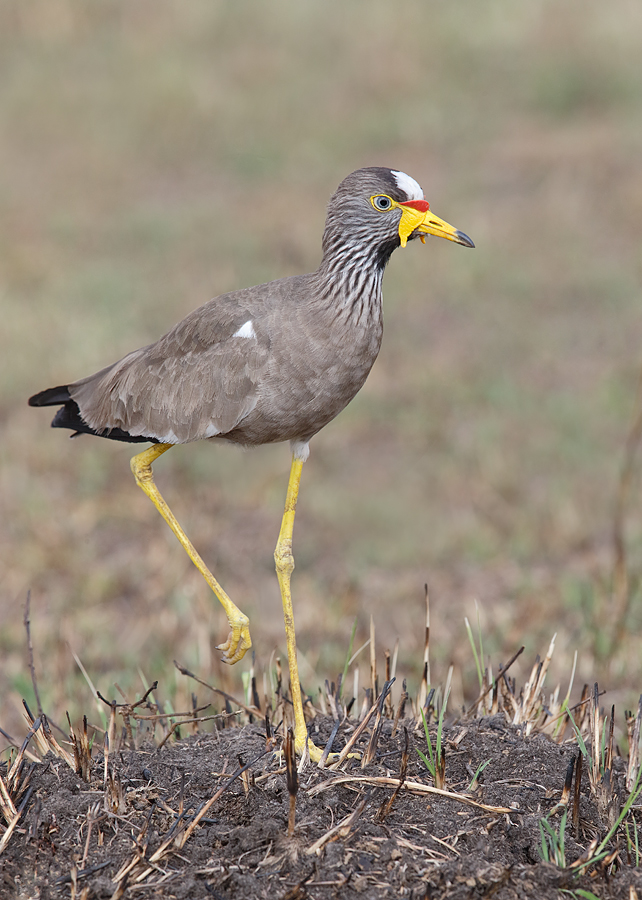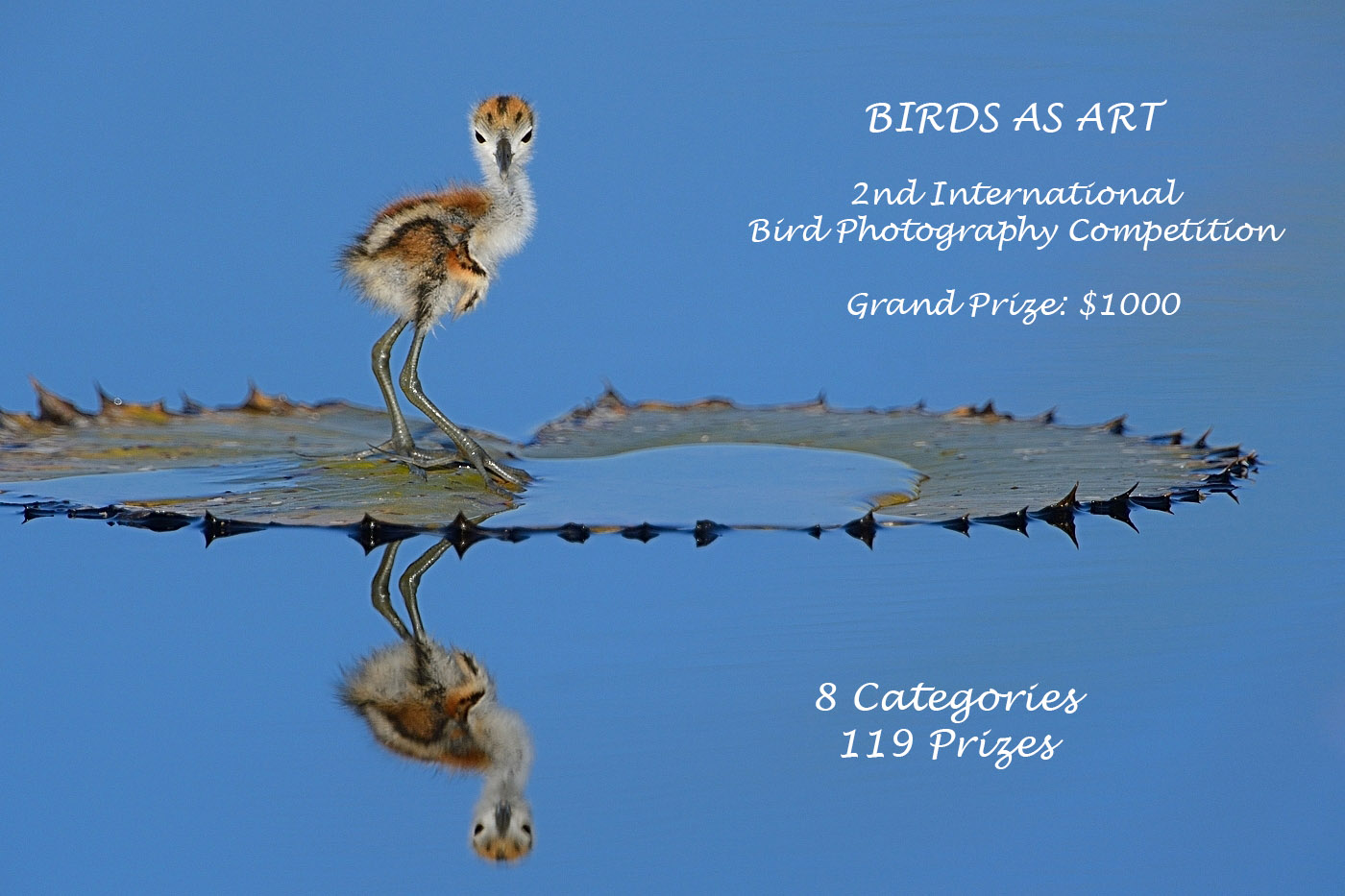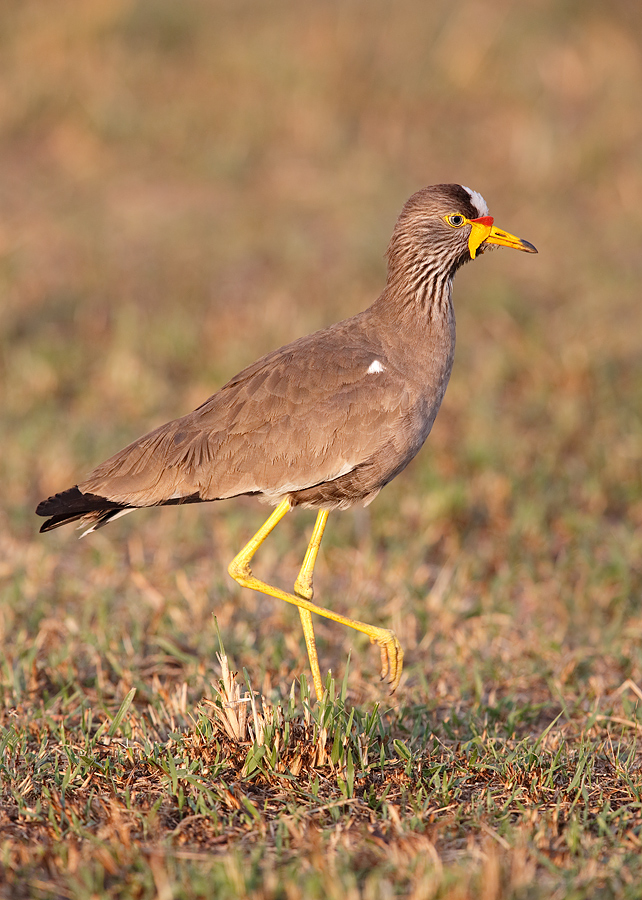Connecticut Help Needed Now
Denise Ippolito and I are seeking information on locations within an hour or two of Salem, Connecticut where we might photograph fall color this coming Saturday. Any help would be greatly appreciated. Locals should see the info on the Salem, CT Shooter’s Gallery Seminar this coming Sunday. If you would like to learn to create better images and are within a two hour drive you do not want to miss this event.
BIRDS AS ART Bulletin #450
BIRDS AS ART Bulletin #450 is online now and can be accessed here. Of special interest are the two vulture images that illustrate “A Matter of Style.”
- Salem Connecticut Shooter’s Gallery Seminar
- BIRDS AS ART 2nd International Bird Photography Competition
- The Blog is the Bomb
- A Matter of Style
- 2014 Tanzania Summer Safari
- Flight Plan
- Canon EF 24-70mm f/2.8L II USM Lens
- Affiliate Links
- IPT INFO

|
|
This image of a Wattled Plover was created on the Tanzania Summer Safari from the opened side window of the van with the hand held Canon EF 600mm f/4L IS II USM lens, the Canon 1.4x EF Extender III (Teleconverter), and the Canon EOS-1D X Digital SLR camera. ISO 800. Evaluative metering +2/3 stop: 1/400 sec. at f/9 in Av Mode. Two sensors above the central sensor/AI Servo/Surround Rear Focus AF on the edge of the bird’s breast active at the moment of exposure. Click here if you missed the Rear Focus Tutorial. Click on the image to see a larger version. |
Understanding the Color of Light
The image above was made in cloudy conditions near our Mobile Tented Camp near the Mara River, Serengeti, Tanzania at 5:07pm on August 12, 2013. The image below was made in the same location after the sun broke through at 5:59pm.
The main difference in the two images is the color of the light. The opening image was made in relatively cold light. The clouds filter out the RED and YELLOW components of the sunlight leaving the BLUE light to predominate. In the image below, the unfiltered REDs and YELLOWs give the image a much warmer look.
|
This image of a Wattled Plover was also created on the Tanzania Summer Safari from the opened side window of the van with the hand held Canon EF 600mm f/4L IS II USM lens, the Canon 1.4x EF Extender III (Teleconverter), and the Canon EOS-1D X Digital SLR camera. ISO 800. Evaluative metering +1/3 stop: 1/640 sec. at f/7.1 in Av Mode. Three sensors above and one to the right of the central sensor/AI Servo/Surround Rear Focus AF on the bird’s upper back active at the moment of exposure. Click here if you missed the Rear Focus Tutorial. Click on the image to see a larger version. |
Questions
Which image do you prefer? Why?
Which light do you prefer? Why?
Which image has a better head angle?
The two exposures, 1/400 sec. at f/9 and 1/640 sec. at f/7.1 are the same. Why didn’t I need more light for the image made when the sun was out???
Why did I add 2/3 stop of light to the image made when it was cloudy but only 1/3 stop when the sun came out?
Canon EF 24-70mm f/2.8L II USM Lens
While I love my 24-105mm as a B-roll lens, I often wish that I owned and traveled with the Canon EF 24-70mm f/2.8L II USM Lens. It is miles sharper than the 24-105 and meshes perfectly with no overlap with the great 70-200mm f/2.8L IS II.
Right now B&H has an amazing deal on this great landscape lens–yikes, I need to borrow one for my upcoming Torres del Paine trip–$1,999.00 at check out. The regular price is $2,299.00. What are you waiting for. Please, please pretty please, web orders only by using our product-specific link above or by clicking on the logo-link below.
Shooters Gallery Photography Program
October 20, 2013. Salem, CT
Click here to register.
Artie Morris & Denise Ippolito
Date: Sunday – October 20, 2013: Time: 9:00am – 4:00pm
Location: Salem Gardner Lake Firehouse Hall, 429 Old Colchester Road, Salem, CT 06420
Admission Fee: The Artie Morris presentation from 9:00am until 10:45am is free and open to the public courtesy of Canon U.S.A. The presentation by Artie and Denise from 11:00am until 4:00pm is $40.00 (Lunch & morning coffee included)
Host Organization: Shooters Gallery Photography Group
9:00 to 10:45 – “Choosing and Using Lenses for Nature Photography… BIRDS AS ART Style” – Artie Morris (Sponsored by Canon U.S.A.)
10:45 TO 11:00: Break
11:00 to 12:00 – “Blooming Ideas” – Denise Ippolito
12:00 to 1:00 – Lunch
1:00 to 2:00 – “Refining Your Photographic Vision” – Artie Morris and Denise Ippolito
2:00 to 2:30 – “Pro Gear Handling Tips” – Artie Morris and Denise Ippolito
2:30 to 2:45 – Break
2:45 to 4:00 – “Creating Pleasing Blurs” – Artie Morris and Denise Ippolito
Click here to register.

|
BIRDS AS ART 2nd International Bird Photography Competition
Learn more and enter the BIRDS AS ART 2nd International Bird Photography Competition here. Twenty-five great prizes including the $1000 Grand Prize and intense competition. Bring your best.
2014 Tanzania Summer Safari
2014 Tanzania Summer Safari, 14-day African Adventure/leave the US on August 9. Fly home on August 24: $12,999.
Co-leaders Todd Gustafson & Arthur Morris. The limit is 12. Three photographers/van; you get your own row of seats. Our trip is a bit more expensive than the average safari for good reason. It is the best. We have the best driver guides with a total of decades of experience. They have been trained over the years by Todd and by me to drive with photography in mind. We have the best and most knowledgeable leaders. We stay in the best lodges and camps. We hope that you will join us for what will be Todd’s 35th African safari, and my 8th.
If you are seriously interested please e-mail me; I will be glad to send you the illustrated PDF with the complete itinerary and deposit info.
What else makes this expedition unique?
•Pre-trip consultation and camera equipment advice
•Award-winning photographers as your guides
•A seamless itinerary visiting the right locations at the best time of year
•Hands-on photography instruction in the field
•Specially designed three rood hatch photo safari vehicles
•Proprietary materials for preparation, including free copy of “A Photographer’s Guide to Photographing in East Africa.”
•Post-safari image critiques
All-inclusive (double-occupancy) except for your flights to and from Kilamajaro Airport, bar drinks, soda & water (except at the Intimate Tented Camp where everything is free for our entire stay), tips for drivers and camp staff, personal items, and trip insurance.
Support the BAA Blog. Support the BAA Bulletins: Shop B&H here!
We want and need to keep providing you with the latest free information, photography and Photoshop lessons, and all manner of related information. Show your appreciation by making your purchases immediately after clicking on any of our B&H or Amazon Affiliate links in this blog post. Remember, B&H ain’t just photography!




Amazon
Everyone buys something from Amazon, be it a big lens or deodorant. Support the blog by starting your search by starting your search by clicking on the logo-link below. No purchase is too small to be appreciated; they all add up. Why make it a habit? Because I make it a habit of bringing you new images and information on an almost daily basis.
Typos
In all Bulletins, feel free to e-mail or leave a comment regarding any typos, wrong words, misspellings, omissions, or grammatical errors. Just be right. 🙂
IPT Info
Many of our great trips are filling up. Two great leaders ensure that you will not learn more anywhere about how to make great images. Click here for the schedule and additional info.















Hi! I believe you may have a small error: it is Torres del Paine…
But, I love the picture of the bird in the cooler light, likely mostly because of the head angle. I also feel that both colors give a drastically different feel for the image. Both are great feelings, yet quite different. The cool feels calm, sedate, and stable, yet the warm feels dynamic, welcoming, and alive. Thanks for sharing the images!
Well, that was an embarrassing error :). thanks, artie
Fixed it! Thanks again. artie
You’re welcome! Thank you for the blog! It is very helpful!
Artie – I like the pose/angle of the bird in the first image. I think it is more compelling than the straight on profile of the second image. However, I do like the warmer lighting of the second shot. However, I think my preference for ideal lighting would be somewhere between the first and second image. The 2nd image may be a tad too warm. That’s my opinion.
Hi Michelle, Good to see you here :). Thanks for commenting. artie
Which image do you prefer? Why?
The first. The color is more neutral to me and I feel more involved with the bird due to the ¾ positioning. I also like the stronger separation between the bird and background and the large in-focus foreground creates a nice pedestal for the bird. A personal preference is to see the front of birds because they often have interesting texture/patterns.
Which light do you prefer? Why?
The first. I like the softer more even look of the light. I’m not a fan of the yellow light look. I know, heresy.
Which image has a better head angle?
The second. Everything is nicely aligned, all parts of the bird and the bird to the image plane.
The two exposures, 1/400 sec. at f/9 and 1/640 sec. at f/7.1 are the same.
Why didn’t I need more light for the image made when the sun was out???
I’m really missing something on this one. Why would you need more light when the sun is out? I would expect to need more light when the sun is under the clouds. Unless the bird was back or side lit in full sun then the image side would be in shadow but in this case it was front lit.
Why did I add 2/3 stop of light to the image made when it was cloudy but only 1/3 stop when the sun came out?
Due to the color of the light and the yellows on the bird. When “exposing to the right” the cooler light in the first allowed you to add 2/3 without blowing anything out. If you had done +2/3 on the second image the yellows would have been blown and detail lost.
Hi, Artie. I prefer the first image, largely because the bird’s eye is so compelling. Also, the whole bird is angled toward the camera somewhat, which pleases me more.
I don’t have a preference for either light. Both have their appeal, both seem reasonably representative of what one might actually see.
I prefer the head angle in the first image, as well as the whole body angle. You can see both wattles in that one and the eye is much clearer, and you can see more of the white patch on the forhead. I prefer a head angled slightly toward the camera than one exactly at right angles to it.
The only thing I can think of to explain why you didn’t need more light–actually, my question would have been why didn’t you need LESS exposure with the sun out than behind the clouds, in other words, why there wasn’t more ambient light–is that the second exposure was nearly an hour later, at 6 pm, so the sun was much closer to the horizon than at just after 5 pm, hence an unobscured sun near sunset provided no more light than an obscured, higher sun an hour earlier.
I don’t know why you added 1/3 versus 2/3 exposure.
In regards to the first image…would you attempt to
warm it up a little so it looks more like #2?
Thanks
Doug
I could warm it up a bit but trying to get it too look exactly like the one in late light would likely fail…
Love that Wattled Plover photo.
Your site loads almost instantly on my computer now and comments seem to be work, so kudos to everyone who worked on it!
Thanks. That would be the incomparable Peter Kes.
Very nice images Artie!
I like both and I think the one I would prefer is neither of them but rather the warmth of the second one, the leg position of the second one which I find more interesting than the first, but I would prefer the first one for the eye contact in particular and the general pose of the birds which seems slightly turned toward the camera whilst the second one the bird is probably parallel but the general impression is that the bird seems somewhat facing the other direction and “leaving”. Now the “prefect” photo does not exist, so if I must choose one, I’d go for the first one because it has a greater impact, better eye contact and more dynamic posture.
+2/3 on the cloudy image because the bottom third of the ground is darker than mid tone and I’d say the bird is darker as well, though less so
+1/2 on the sunny image, a +ive EC for the same reasons as before but +1/3 only to preserve the white and yellows which otherwise would be blowed by sun light and colour of light respectively
Always embarrassing when one realists that a public answer is the opposite to what it should have been. At the same time it confirms the intellectual value of the exercise.
So let attempt a second time.
+ 2/3, under cloudy condition with a background lighter than mid tone, so need to add light
+ 1/3 on the sunny image , basically the same as before (because sun is less than at max) but need to preserve details in the whites/yellows
Artie, looking forward to read your take on it. But surely I’ll play more often for my own benefit 😉
My opinions and preferences are:
a. I prefer everything in image 1 except the bird’s feather color is apparently not accurate. Head and body angle and bird contrast with the background is better. More of the foot is visible.
b. Except for body and head angle, color and almost everything else about picture 2 is apparently more accurate and representative of actual scene. I have photographed similar sized ground birds from vans in Kenya and Ecuador and would have been very pleased to have either of the above shots.
c. Image 1
d&e. I apparently do not have enough experience to answer these two questions.
Not sure how we can know the real color of the bird as we are always in part seeing the color of the reflected light….Thanks for chiming in. artie
I prefer #2 for the beautiful light and more complete bird profile. Question: Which is closer to the real color of the bird?
I think #1 has a better head angle, however.
Both are great IMO.
Thanks. :). Which is closer to the real color of the bird? I am not sure how to answer that correctly; we are always–in part, seeing the color of the reflected light…. artie
Artie,
Personally I prefer the first image. I like the angle of the bird it has a feeling of a 2/3 profile compared to the profile in the second shot.
For a color choice, I prefer the warmer color of the second image.
As for the exposure question,
1. The first shot required +2/3 EC because the overcast sky, and the background is lighter than middle tone.
2. The second shot used +1/3 EC because the sun was now out and the background had become a middle tone.
Tom
Which image do you prefer? Why?
Which light do you prefer? Why?
Which image has a better head angle?
Difficult questions because my answers are based on just what you are asking. I prefer the angle of the plover in image one, but prefer the warmer feeling of image two. The angle of the bird in image two just makes it seem a little flat.